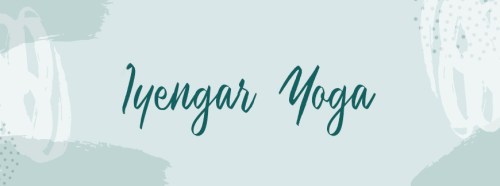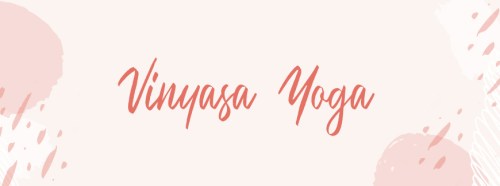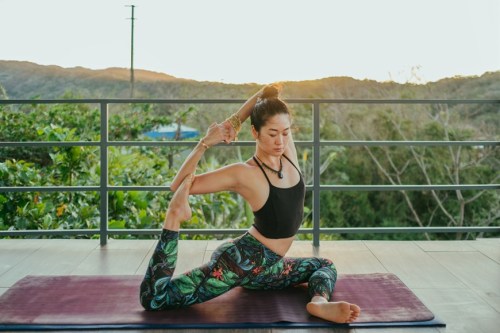Stress-relief and relaxation are just two benefits of yoga: It can elevate self esteem, improve cardiovascular health, and ease lower back pain, too. And similar to meditation, there’s basically a style for every type of person.
When you’re choosing the right practice for you, it’s important to keep your goals, temperament, and level of experience in mind, according to Andrea Borrero, senior managing teacher at Pure Yoga in New York City. Exploring your options is also a good idea.
“You won’t know what you really like until you try,” she says.
To help you get started, here’s a primer on popular types of yoga.

Ashtanga yoga
This athletic style of yoga is challenging and centers on sun salutations (both series A and B), as well as nine seated positions, a section of hardcore abs asanas, plus inversions. Phew! “When combined with controlled breathing and focus points, this system becomes a meditative experience,” says Jamie Haring an Ashtanga instructor at Pure Yoga. If you like a challenge, this could be the practice for you. Just be prepared: “You may see some crazy poses, and it can be difficult. Yoga brings up challenges but is ultimately about love and freedom,” says Haring.

Hatha yoga
At its core, hatha is simply any style of yoga that involves movement by means of asanas and pranayama breathing, which combine to create a meditative state that typically leaves you basking in some seriously good vibes by the time you leave your mat. It’s a physical practice and a good way to learn postures if you’re new to yoga.

Hot yoga
Hot yoga can refer to any type of yoga practiced in a warm, climate-controlled room with temperatures typically between 85 and 105 degrees. (Vinyasa, Bikram, and power yoga are popular styles.) Turning up the heat often increases the intensity of the class—and adds a detoxifying element to the discipline. For less flexible folks, it can “help you begin or deepen your yoga practice,” says Charlotte Munn, master trainer at CorePower Yoga. Just make sure to listen to your body and not push past its breaking (bending?) point. Oh, and drink a full glass of water about two hours before class, she says. “And don’t worry about creating a giant pool of sweat or soaking through your workout clothes; it’s normal.”

Iyengar yoga
Developed by B.K.S Iyengar in the ’70s, this style puts an emphasis on alignment and deepening your self-awareness, by requiring yogis to hold a sequence of standing and seated asanas for several breaths. “It’s ideal for beginners because it gives them a sense of how they’re supposed to be working in the pose,” says Adam Vitolo, a certified yoga teacher who’s taught Iyengar for 18 years and is associated with the Iyengar Yoga Institute of New York.

Kundalini yoga
Kundalini yoga combines postures, movement, sound currents, breathwork, and meditation into powerful sets called kriyas—think of it like a recipe. “You’re aiming to break through the mental and physical patterns that hold you back from being consciously you,” says Simran Khalsa, a teacher at Kundalini Yoga East in New York City. Newbies may be thrown off by the moments of fast-paced breathing and duration of some kriyas, which can require you to hold your arms or legs in the air for several minutes at a time. “Feeling awkward means you’re stepping outside your comfort zone and that’s where growth happens,” says Khalsa. “Don’t worry. Just join in.”

Power yoga
Power yoga is an umbrella term for more vigorous, fitness-based, vinyasa yoga methods, closely linked with the traditional ashtanga method. A popular style is Baptiste yoga, which is the basis for both CorePower Yoga’s 170 US locations and the buzzy NYC studio Lyons Den Power Yoga. Like vinyasa, it can be practiced in a normal or heated room. “You focus on yoga postures that open the shoulders, hips, and spine, while strengthening your core and upper body,” says Charlotte Munn, master trainer at CorePower Yoga.

Restorative yoga
In restorative yoga you’ll find long held and supported poses. Classes often involve props like bolsters, blankets, and blocks. Typically, the practice involves five to six poses, each held for five minutes or more. Like all yoga, it can help to calm the nervous system, decrease heart rate, and lower levels of the stress hormone cortisol. “Restorative yoga supports us in a way that allows our body to move into deep relaxation,” says Sarah Platt-Finger, co-founder of Ishta Yoga in New York City. “The joints are soft, which simulates being in the womb. The poses move us from sympathetic—or fight or flight—to parasympathetic—rest and digest.”

Vinyasa yoga
The focus of this form of yoga is to flow through a sequence of asanas, one breath, one posture. “It involves lots of dynamic movement and is a really amazing way to tune in with your body, your mind, and your breath,” says Sarah Levey, co-founder of Y7 Studio, a hip-hop inspired yoga studio with a cult following and locations in both New York and Los Angeles. “Vinyasa yoga is said to be a moving meditation, because the dynamic movement throughout class requires students to stay fully focused on what they’re doing physically.”

Yin yoga
Similar to restorative, Yin yoga is the practice of long held, seated postures or stretches that involve releasing the connective tissue, or fascia, in the body. “Yin really helps to release the fascia that gets contracted due to excess stress or tension,” says Platt-Finger. “Fascia holds memories and emotions so in that sense, Yin yoga can help cleanse our consciousness.”
Once you’ve found your yoga style, make sure you’re using the mat to best support your practice. And for more, learn how to modify common poses.
This article was originally published on April 20, 2018; it was updated on June 15, 2018.
Sign Up for Our Daily Newsletter
Get all the latest in wellness, trends, food, fitness, beauty, and more delivered right to your inbox.
Got it, you've been added to our email list.











